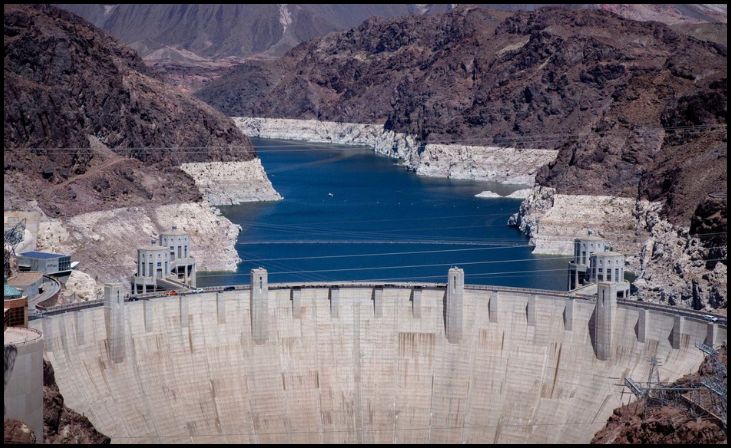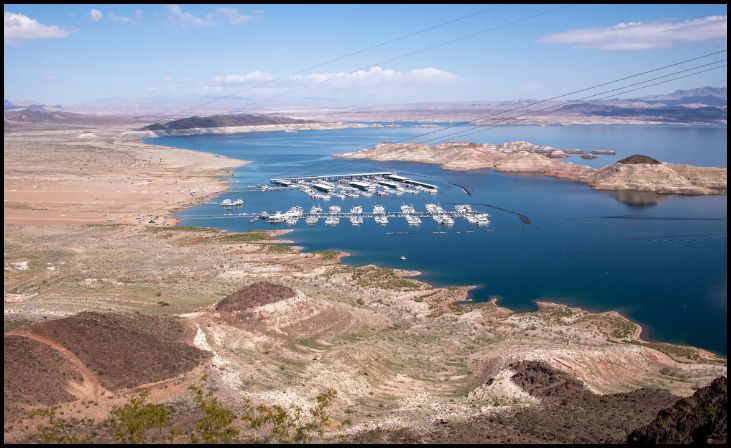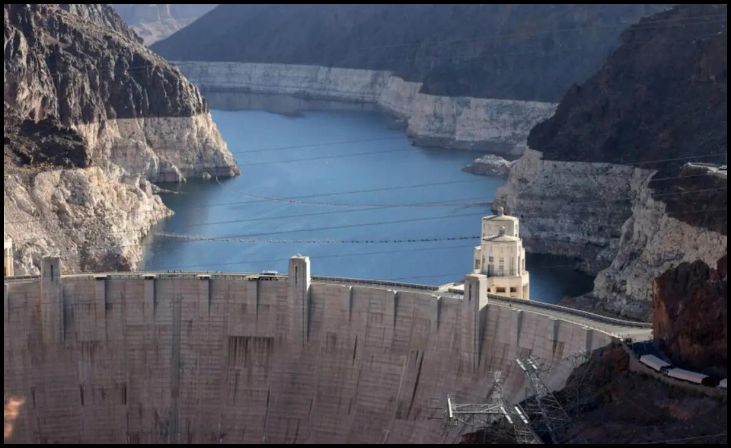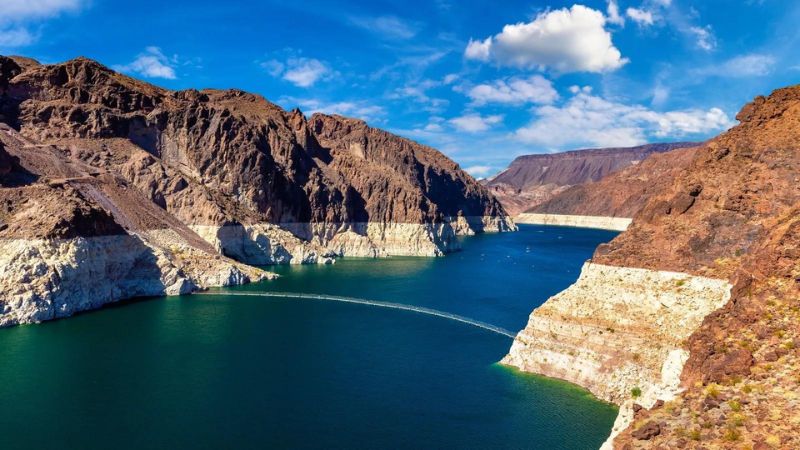The iconic Lake Mead, nestled within the Colorado River Basin, has long been a vital water source for millions of people in the southwestern United States. However, recent years have witnessed a concerning trend: the water levels in Lake Mead are fluctuating at a rate not seen in decades. This phenomenon has far-reaching implications for the region’s water supply, ecology, and economy.
Understanding the Significance of Lake Mead

Lake Mead, formed by the construction of the Hoover Dam in the 1930s, is the largest reservoir in the United States by volume when at full capacity. It serves as a crucial water storage facility, providing irrigation, drinking water, and hydroelectric power to communities in Arizona, California, Nevada, and beyond. The reservoir’s water levels are closely monitored due to their implications for water management and sustainability in the region.
The Current Situation
In recent years, Lake Mead has experienced a rapid decline in water levels, reaching historically low levels. According to data from the U.S. Bureau of Reclamation, the reservoir’s water levels have dropped significantly, sparking concerns among water managers and policymakers.
Factors Contributing to the Decline

Several factors contribute to the declining water levels in Lake Mead. These include:
- Drought Conditions: The southwestern United States has been grappling with prolonged drought conditions, reducing the inflow of water into the reservoir. Below-average precipitation and warmer temperatures exacerbate the impact of drought on water levels.
- Increased Water Demand: Growing population, urbanization, and agricultural activities have led to increased water demand in the region. This heightened demand places additional pressure on Lake Mead’s water supply, further depleting its reserves.
- Climate Change: Climate change is altering precipitation patterns and exacerbating drought conditions in the southwestern United States. Rising temperatures contribute to increased evaporation rates from the reservoir, accelerating the decline in water levels.
Implications of Declining Water Levels
The rapid decline in Lake Mead’s water levels has significant implications for various stakeholders:
- Water Supply: Reduced water levels in Lake Mead pose challenges for water supply management in the region. Water shortages may impact agricultural irrigation, municipal water supplies, and hydropower generation, affecting millions of people.
- Ecological Impact: The declining water levels can disrupt the delicate ecological balance of the Colorado River Basin. Habitat loss, altered flow regimes, and diminished water quality can harm native species and ecosystems dependent on the river.
- Economic Consequences: The tourism industry, which relies heavily on recreational activities at Lake Mead, may suffer due to declining water levels. Additionally, reduced agricultural productivity and increased water costs can impact the region’s economy.
Addressing the Challenges Ahead

Addressing the challenges posed by declining water levels in Lake Mead requires a multifaceted approach:
- Water Conservation: Implementing water conservation measures and promoting efficient water use practices can help mitigate the impact of declining water levels.
- Diversification of Water Sources: Investing in alternative water sources, such as water recycling and desalination, can reduce reliance on Lake Mead’s dwindling reserves.
- Adaptation Strategies: Developing adaptive strategies to cope with changing water conditions, such as adjusting water allocation agreements and updating infrastructure, is crucial for ensuring water security in the region.
Conclusion
The rapid changes in Lake Mead’s water levels underscore the pressing need for proactive water management and conservation efforts. By addressing the underlying factors contributing to the decline and implementing sustainable solutions, stakeholders can safeguard the future of this vital water resource for generations to come.
